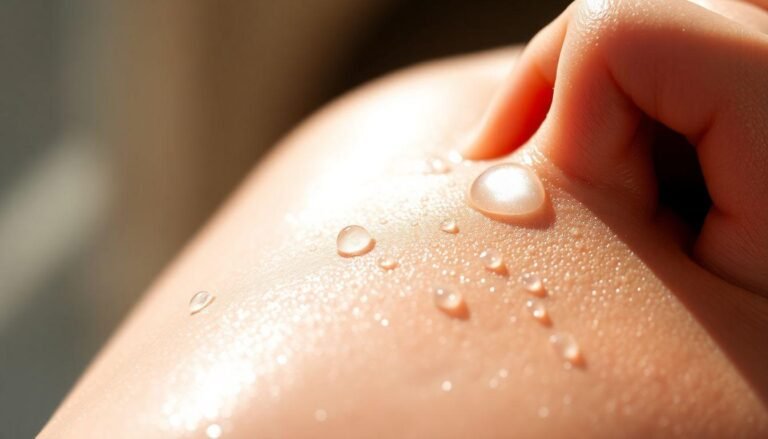If you’ve ever experienced the frustration of dry, flaky skin that feels tight no matter how many lotions you apply, you’re not alone. Dealing with very dry skin can be challenging, especially when seasons change or stress levels rise. The good news? You don’t need an overly complicated skincare routine with dozens of products to find relief. With the right approach and consistent care, even the driest skin can become soft, supple, and healthy. This skin care routine for very dry skin focuses on gentle, effective steps that restore moisture and protect your skin’s natural barrier.
Understanding Very Dry Skin: Why Your Skin Needs Extra Care
Before diving into our routine, let’s talk about why some of us struggle with extremely parched skin. Very dry skin occurs when your skin lacks sufficient moisture and natural oils. This could be due to genetics, aging, weather conditions, hot showers, or even certain medications.
The signs are unmistakable:
Your skin has a natural protective barrier made of oils, fatty acids, and ceramides. When this barrier weakens, moisture escapes more easily, and irritants can penetrate more readily. That’s why our routine focuses not just on adding moisture, but also on rebuilding and protecting this crucial barrier.
Step 1: Gentle, Hydrating Cleansing
The foundation of any good skincare routine starts with cleansing, but those with very dry skin need to be especially careful here. Traditional foaming cleansers can strip away the precious little oil your skin produces.
Instead, opt for creamy, hydrating cleansers labeled “for dry skin” or “moisturizing.” Cleansing oils and balms are excellent choices as they clean effectively without disrupting your skin barrier.
Tips for cleansing dry skin:
Cream cleansers with ingredients like glycerin, hyaluronic acid, and ceramides will cleanse while beginning the hydration process. Remember, you shouldn’t feel “squeaky clean” after washing—that tight feeling means you’ve removed too many natural oils!
Step 2: Layer Hydrating Toners and Essences
This step might be new to some, but it’s a game-changer for very dry skin. Hydrating toners (not astringent ones!) and essences add an immediate layer of moisture that helps subsequent products absorb better.
Look for alcohol-free formulas containing:
Apply by gently pressing into the skin with your fingers or a reusable cotton pad. For extremely dry skin, try the “7-skin method” (applying seven thin layers of toner) or a simplified version with 2-3 layers.
Why This Step Matters
Think of your dry skin as a sponge that’s been left out too long—it’s hardened and doesn’t easily absorb water. A hydrating toner softens the “sponge,” making it receptive to the richer treatments that follow.
Step 3: Target Specific Concerns with Serums
Serums deliver concentrated ingredients to address specific skin concerns. For very dry skin, focus on serums that boost hydration, strengthen the skin barrier, and provide antioxidant protection.
Key ingredients to look for:
Apply your serum to damp skin, using 2-3 drops and pressing gently into the skin. Wait about 30 seconds before moving to the next step.
Step 4: Lock In Moisture with the Right Moisturizer
This is where the magic happens for dry skin. A good moisturizer combines humectants (to attract water), emollients (to soften), and occlusives (to seal everything in).
For daytime, choose a rich cream moisturizer that still feels comfortable under makeup. For nighttime, don’t be afraid to use something that feels a bit heavier—this is when your skin does its repair work!
Ideal ingredients include:
Apply moisturizer while your skin is still slightly damp from your serum. Use gentle upward strokes and give special attention to particularly dry areas.
Special Treatments for Extra Dry Patches
For those stubborn dry patches (like around the nose or on cheeks), consider spot-treating with a healing ointment containing petrolatum or beeswax after your regular moisturizer.
Step 5: Seal and Protect with Oils and Sunscreen
The final step varies between day and night:
For daytime: Always finish with a broad-spectrum SPF 30+ sunscreen. Look for formulations specifically for dry skin, often labeled “hydrating” or “moisturizing.” Mineral sunscreens with zinc oxide can be particularly soothing for sensitive dry skin.
For nighttime: Consider adding a facial oil as your final step. Oils like argan, rosehip, squalane, or jojoba closely mimic your skin’s natural sebum and create a protective seal over all your hydrating layers. Just 3-4 drops pressed (not rubbed) into the skin can make a tremendous difference by morning.
Weekly Treatments to Enhance Your Routine
Once or twice a week, treat your skin to extra nourishment:
Remember that consistency is key with a skin care routine for very dry skin. Results may not be immediate, but with regular care, your skin’s natural moisture balance will improve over time. Listen to your skin—some days it might need more hydration than others. By following these 5 simple steps and adjusting as needed, you’ll be well on your way to comfortable, healthy skin that glows with natural radiance.







